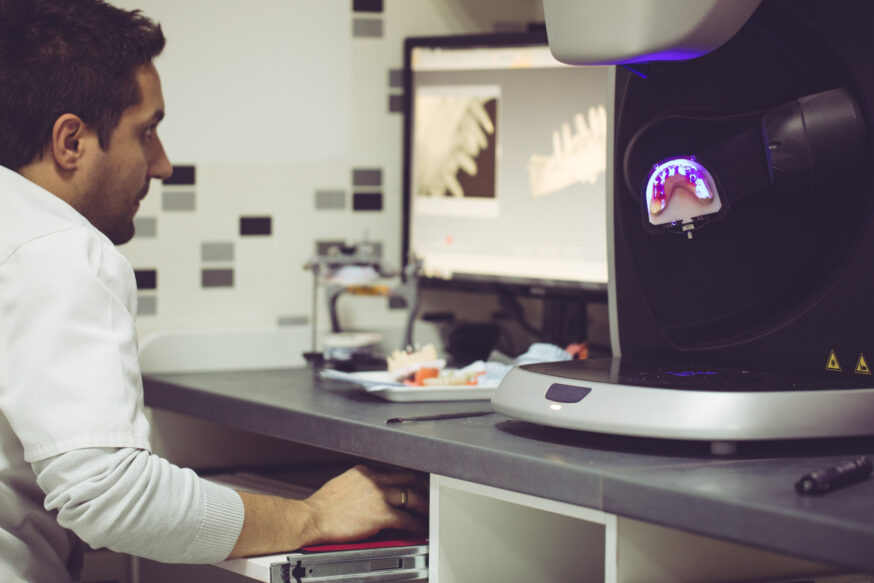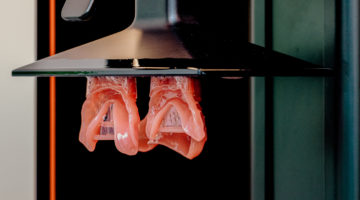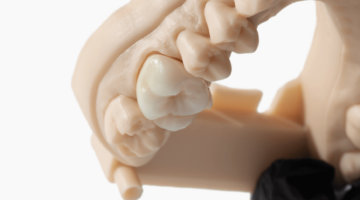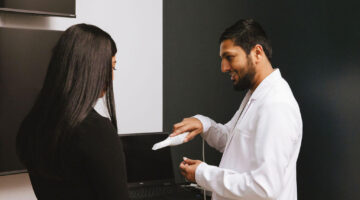With newly available CAD/CAM technologies and digital workflows, dentists can now build in-house dental labs. Although, it’s best to consider the start-up and ongoing costs and expenses before you take the plunge.
Can a dentist have an in-house dental lab?
Simply can you bring a lab in-house? Yes. Should you bring a lab in-house? That’s more complicated.
First, the cons: only 3% of all dentistry practices in the U.S. have their own full-service, in-house dental labs. The other 97% of dentists still send their stuff to a lab for a few reasons. First, a lab requires extra space, and many dentists are essential single-practice, small business owners. Setting up automated systems, adding (and training) additional labor is time-consuming and difficult, and labs need space.
The pro: As a dentist, you’ve probably received training on lab procedures while at dental school and can easily collaborate with a CDT to create successful restorations for your patients. With a dental lab just a few steps away, you can easily customize dental restorations to your patients’ needs.
Why have an in-house lab?
Time is the biggest factor. But also having a dental lab on-site gives you control over how the product is made. If a patient has questions or suggests a change, the dentist can ask a lab technician to consult with the patient. Operating an in-house dental lab offers the ability to quickly and easily collaborate with a lab technician, which helps you serve patients better.
Larger group practices can pool resources between several offices and make the economics of the investment make more sense at scale, but there is another way to get lab work done without the extensive overhead of a full internal lab. Some savings include time-consuming postal drop-offs and the cost of stamps.
What does a dental lab do?
A dental lab can capture impressions, make molds, create restorations, and manufacture and fabricate dental appliances.
What are the capabilities of an in-house dental lab?
Starting an in-house lab means planning a budget and considering your ability to use the equipment in the time allotted. There still may be times when outsourcing is necessary. It’s best to decide on the types of lab services you would like to specialize in. These may include:
- Crown and bridge
- Digital dental services
- Implant Solutions
- Orthodontic products
- Night guards and splints
- Removables
Equipment and materials needed to start an in-house dental lab
Being conservative, and assuming you have the space, let’s consider just the hardware. You’ll need utility equipment, like air filtration and compressors. You’ll need handpieces, polishing systems, ultrasonic cleaners, curing systems, digital (3D) printers, and more. You’ll also need workbenches or chairs, more lighting. More cabinetry. And you’ll need to pay your staff more (or hire more staff). If you get high-quality refurbished automatic sterilizer, you could pay up to $5000 for it—some other pieces of equipment listed can run you three times this much. When buying equipment you want to make sure you’re getting your money’s worth. Is it going to be worth it to invest in all this equipment, labor, and overhead?
Dental lab equipment includes the equipment, systems, and machines that allow you to produce the best quality dental restorations for your patients. Choosing the right equipment is important to your lab’s operation and success.
Equipment you may need includes:
- Lab workstation (with built-in vacuum or dust collector)
- Lab model construction tools (alginate mixer, duplicating machine, model trimmer, light curing unit)
- Dental waxing equipment (gas light, carving wax heater, gas torch, wax pot, wax knife)
- Casting equipment (burnout furnace, casting machine, dental welder)
- PFM equipment (porcelain furnace, dental sandblaster)
- Polishing and cleaning equipment (handpieces and motors, polishing lathe, steam cleaner,
- Utility equipment (dust collector, fume hood)
- Other (dental amalgamator, systems and parts)
Materials you may need include:
- CAD/CAM Materials
- Metals
- Metal-Ceramics
- Plastics
- Traditional All-Ceramics
Hiring specialists for your in-house dental lab
CDTs and dental technicians have specialized training and skills which include problem-solving, manual dexterity, creativity, adaptability, and patient communication. Hiring a CDT is similar to hiring other employees. As a dentist, you may already know a technician and be familiar with their work.
Depending on your lab specialty, the CDT you hire should be able to perform these tasks:
- Bend and shape materials using tools
- Build temporary crowns
- Design crowns, bridges and other dental appliances
- Determine the best materials to use for dental appliances or impressions
- Melt wax and other materials and pour into molds
- Prepare trays and bite blocks
- Polish and edge dentures, crowns, and bridges
- Read and follow prescriptions and orders
- Repair dentures, frames and bands
- Use a workstation and software to design or print prototypes
The U.S. Bureau of Labor Statistics sets the mean hourly wage for dental laboratory technicians at $24.01 per hour or $49,930 per year.
The overhead cost for operating an in-house dental lab
One of the most important considerations when building an in-house dental lab is costs and expenses. With the cost of modern equipment and dental staff, your investment could reach tens of thousands of dollars. If you’re a single practitioner, the cost may be too high but if you work as a part of a three or more dentist team, the cost can make sense because fellow dentists can share the costs and expenses. You’ll need to see if the speed of work is all worth it.
Your lab start-up costs may include:
- Insurances
- Licenses
- Marketing costs
- Permits
- Renovations or upgrades
- Tracking and billing software
Buying dental lab equipment vs. working with a digital dental lab
Compared to the dentistry of old, an in-house lab, outfitted with CAD/CAM technology means no mailing molds, no waiting on models. And that means patient visits can happen on an accelerated cadence. But compared to the dentistry of old, there is another way to get almost in-house speed without buying benches, chairs, new lights, expanding your building, and hiring new staff: Dandy’s do-it-all digital dental lab with faster turnaround times than analog dentistry and 2-appointment dentures.
Also, ask yourself the same questions you would ask a dental lab.
Ultimately is a decision you will make using the equation of investment dollars, profit margins, staffing costs (plus finding local quality talent), and sweat equity vs speed of procedures. Same-day crowns are cherished by patients but who pays the price? If you have a big enough practice and the elbow grease and energy to do it, it can definitely be worth it to start an in-house lab. But not all dentists want to own a second business, or continuously vertically integrate when it’s more fun to grow in other ways—offerings, or seeing more patients.
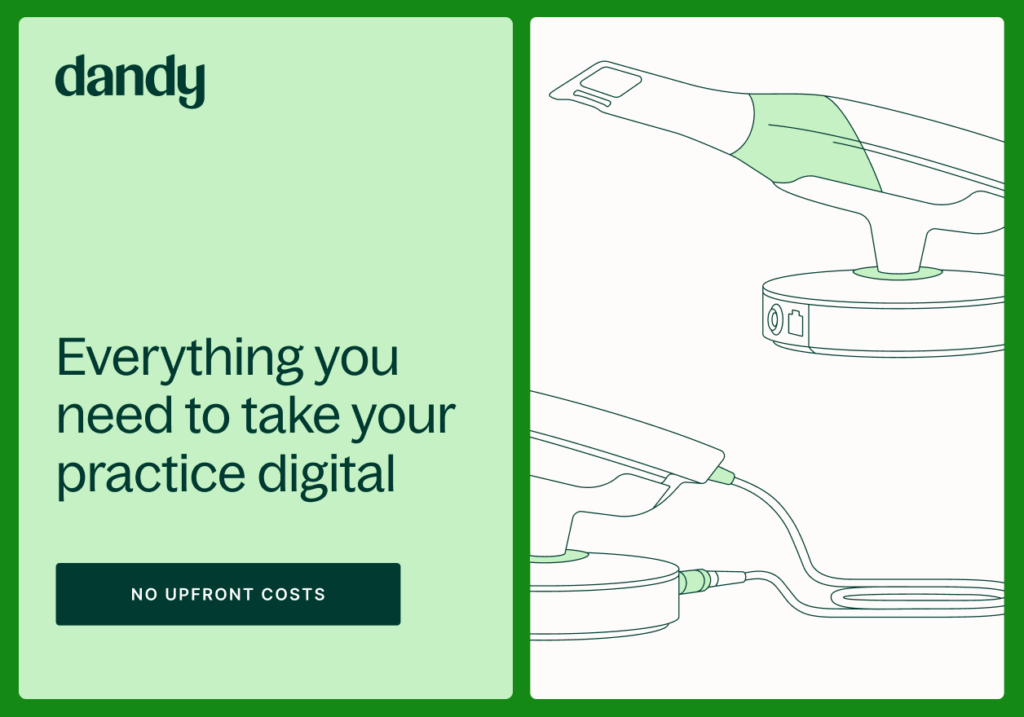
Sources:
https://www.dentalproductsreport.com/view/bringing-dental-lab-house
https://www.thedentallab.net/blog/dental-laboratories-market-overview
https://www.treedental.com/dental-lab-supplies/dental-laboratory-equipment.html
https://luxcreo.com/five-benefits-of-using-a-3d-printing-dental-lab-lc/#:~:text=Scan%3A%203D%20printers%20manufacture%20devices,patient%20than%20traditional%20dental%20molds.
youtube.com/watch?v=FiE4_dbPTNQ
youtube.com/watch?v=IQYj3tXDz1I
youtube.com/watch?v=Z6tO0Dq6RQ4
